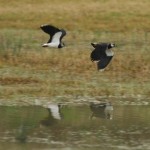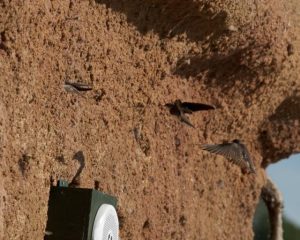Wildlife sightings highlights of 2012
The year started with mild temperatures creating an early spring that confused plants and animals. The real spring arrived - cold and wet then stayed that way on into the summer. This weather delayed development in many species with some showing spring, summer and autumn behaviour during August! After a pleasant September the rain resumed leaving us currently with a high water table and flooded land throughout Sussex.
Some favourite moments from the past year:
- Bittern sighted at the Scrape hide on Feb 6.
- A pair of great crested grebes spotted Swan Lake on April 5.
- Linnets nesting in the hedge behind wet grassland in May.
- 23 Bewick’s swans arrive on Dec 11
Lapwing:

At the end of January we had eight lapwing onsite, starting to swoop at each other in flirting fashion. During a cold snap in mid February 125 lapwings came in to roost one night followed by over 200 the next. These are the highest numbers ever recorded at WWT Arundel. Lapwing continued to delight us through the spring as we watched 8 pairs raise families’ onsite. On April 24 I saw three lapwing adults mob a peregrine hunting their chicks. Lapwings are assertive, devoted parents.
Herons & Kingfishers:
Tree removal around the main lake in spring and huge number of fish in the deep waters near the Sand Martin Hide attracted many herons throughout the autumn. The number of kingfisher sightings since August has also exploded on the reserve.
Sand martins:

Hirundine spring migration was prolonged in 2012 as birds were caught in storms across Europe. Swallows and martins fed onsite in huge numbers, thrilling our visitors.
Sand martins moved through the reserve in April and May with only a few pairs checking our special nesting bank hide. BUT on their Autumn migration back to Africa we were mobbed by hundreds of sand martins in early September. They discovered our specially built hide, attracted by their calls we played on an iPod with outdoor speakers. The sand martins entered the nesting holes, with some roosting overnight.
Snipe:
Snipe numbers have exploded on the reserve this autumn and winter. We have had upwards of 60+ snipe onsite and at least 30+ are sighted daily. The habitats between the Lapwing hide and the Sand Martin hide has firmly re-established after our renovation project two years ago. The snipe in winter and the lapwing in summer are the success stories of theproject.

